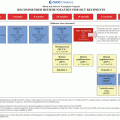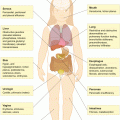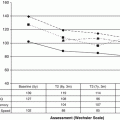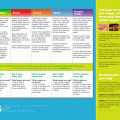© Springer New York 2015
Grace A. Mucci and Lilibeth R. Torno (eds.)Handbook of Long Term Care of The Childhood Cancer SurvivorSpecialty Topics in Pediatric Neuropsychology10.1007/978-1-4899-7584-3_22. Developmental Considerations in the Transition from Child and Adolescent to Adult Survivorship
(1)
Center for Biobehavioral Health, The Research Institute at Nationwide Children’s Hospital and The Ohio State University, Columbus, OH 43205-2696, USA
(2)
University Medical Center, University of Groningen, Groningen, The Netherlands
Keywords
DevelopmentTransitionSurvivorship2.1 Introduction
As a growing number of childhood cancer survivors mature into adults, they have given us a better understanding of the evolving and lasting impact of cancer on the developing child. Because the needs of survivors are ongoing and complex, interdisciplinary care can be optimized when considered within a lifespan developmental approach. A developmental perspective requires sensitivity to the dynamic context of the child and family’s illness experience over time [1, 2]. More broadly, development is seen as a function of interactions between an individual and the environment, such that the individual, environment, and interactions shift over a temporal course [3]. Transitions between developmental periods are also important, as major changes in social roles and contexts can significantly alter the course of physical and psychosocial well-being.
Applied to childhood cancer, a lifespan developmental perspective is integral to planning long-term care. As noted in subsequent chapters of this book, the child’s age or the timing of diagnosis and treatment, as well as his or her current developmental status during survivorship, are important with respect to evaluating risk for late effects and providing appropriate medical and supportive care. The developmental context of cancer has particular relevance for the child’s concept of illness and death, medical knowledge, and involvement in self-care and decision making into survivorship. Furthermore, the timing of any stressor, such as a cancer diagnosis and treatment, may have implications for the emergence of psychopathology and successful coping strategies in children. Finally, there is evidence that childhood cancer can affect the transition between developmental periods after diagnosis, including the attainment of socially-valued milestones (e.g., graduation, employment) and the survivor’s future orientation or goals (e.g., desire to marry or have children).
Thus, we begin this chapter by defining childhood, adolescence, and emerging adulthood and by highlighting the primary tasks of each developmental period [1]. Because limited work has examined the cancer experience of infants and toddlers, we focus on later years, particularly the transition from adolescence into emerging adulthood when survivors begin taking greater responsibility for their healthcare and often transfer from pediatric to adult providers. Attention is paid to the consequences of a child’s diagnosis and treatment for cancer with respect to medical, psychosocial, and socially-valued outcomes. Clinical implications for the assessment and care of the childhood cancer survivor are discussed within a developmental context. Finally, directions for future research are summarized at the conclusion of this chapter.
2.2 Childhood, Adolescence, and Emerging Adulthood
Early childhood (e.g., infancy and preschool years) is a peak period for diagnosis of the two most common childhood cancers, leukemia and brain tumors, but it is the least studied developmental period in psycho-oncology [4]. The intersection of rapid biological development and treatment toxicities can set the stage for later morbidity and late effects, such as neurocognitive, sensorimotor, or psychosocial problems. Foundational skills are established such as forming a secure attachment, eating, and toileting. Greater communication skills, physical mobility, and socialization occur through parallel play and exploration of the world outside of the primary attachment. Although toddlers are relatively egocentric, they develop the ability to conceive of unobserved objects, events, or feelings that allow for fantasy or imaginative play. During middle and later childhood (i.e., ages 5–10 or 12 years old), entry into formal education coincides with the acquisition of academic skills and concrete operational thought, such as elemental logic and conservation. Children become more self-sufficient and engage in new relationships outside of the family. As they begin to learn and conform to social rules, peer relationships are established, and there is a growing importance of group acceptance and same sex friendship. The development of self-esteem is also notable as youth engage in social comparison with peers.
Adolescence is defined in many ways based on chronological age, biological indicators (e.g., pubertal timing or maturation), or simply as the second decade of life. It primarily encompasses the teenage years and is characterized by numerous biological, psychological, and social changes [5]. Neurobiological changes occur, such as synaptic pruning of the prefrontal cortex and ongoing myelination of intracortical regions [6]. The development of formal operational thinking marks a greater capacity for abstract thought and higher order reasoning. Executive functions, such as perspective taking and emotion regulation, evolve. Socially, adolescents develop greater autonomy from parents and gravitate more toward the peer group. With puberty and hormonal changes, psychosexual development begins to include dating, sexual exploration, and more intimate emotional connections with various romantic partners. At the same time, adolescents are also at higher risk for psychopathology, risky health behaviors, and non-adherence to medical regimens [3, 7, 8]. Despite expectations to increase self-management and responsibility for their healthcare, many health behaviors (e.g., adequate nutrition, exercise) are known to decline markedly in adolescence [9, 10]. In addition, experimentation in risk-taking behaviors (e.g., alcohol use, unprotected sex) is common, further blurring the distinction between normative and abnormal functioning during this time [3].
During emerging adulthood (i.e., ages 18–25) one gains increasing independence, acquires more responsibility, and forms an identity that will likely endure throughout adulthood [11]. The decisions and actions that occur during this time can affect education levels, occupational attainment, and social status across the lifespan [12]. Neurobiological changes continue [6]. Primary developmental tasks include formulating one’s own identity or self-concept, establishing independence from parents, and exploring educational, career, and romantic options [11]. Typically, parent-child relationships improve in early adulthood as children become more independent, more geographically distant (e.g., away at college), and more similar to their parents with regard to roles and responsibilities (e.g., adult work or spousal roles) [13]. Additionally, friendships and peer acceptance remain important in emerging adulthood, and romantic relationships become more serious and intimate [11, 14]. However, there is significant variability among youth in these domains. A hallmark characteristic of the late teens and early 20s is the experience of multiple life changes, such as dating different partners, moving frequently, seeking temporary or part-time employment, and pursuing various educational alternatives. Because of the inherent instability during this time, it is often challenging to assess developmental outcomes and then extrapolate or predict future adult well-being. For example, occupational status as an unemployed student or a part-time, hourly employee during emerging adulthood is often temporary and may not be indicative of later economic success.
2.3 Medical Knowledge and Health Behaviors
When a child or adolescent is diagnosed with cancer, there is potential to disrupt development in many areas, which can lead to subsequent difficulties in adulthood. The transition to emerging adulthood is particularly important as they begin taking primary responsibility for their healthcare, experience changes in health insurance, and often “outgrow” their pediatric providers [11, 15]. Unfortunately, the inherent instability in residence and employment during this developmental period may increase the risk that survivors are lost to follow-up and fail to engage in appropriate surveillance for relapse and late effects. Furthermore, Kadan-Lottick et al. (2002) found that nearly 30% of 635 survivors over the age of 18 could not accurately report their diagnosis, and many were unaware of specific treatments they received [16]. Thus, attention to these issues is crucial for adequate care.
With respect to early cancer communication, parents often act as gatekeepers, managing what and how their child is told about the illness and treatment [17]. Unfortunately, health literacy and lay understanding of cancer is often poor [18], and several studies suggest that parents may not fully understand important aspects of their child’s diagnosis, which can complicate communication with the child [19, 20]. Although older children often receive more information about their illness relative to younger children [21, 22], it is typically focused on treatment and procedural details, rather than severity and long-term outcomes. In one study, only 30% of parents talked to their children about all or almost all aspects of their child’s cancer [21]. Claflin and Barbarin (1991) found that of 43 children with cancer, only 50% of children under the age of 9 knew the name of their illness, compared with 87% of 9 to 14-year-olds, and 70% of those over 14 years [23]. Even among adolescents with a long history of disease-free survival, confusion about their disease and treatment is common [24, 25].
Despite ongoing improvements in survivor education and greater availability of comprehensive long-term follow-up care, lack of knowledge has significant implications in multiple domains, including decision making, healthcare utilization, and monitoring of late effects. Although knowledge is critical, it is often not sufficient in producing adherence to medical regimens. Health behavior models suggest other factors are also important, such as adolescent’s risk perceptions, self-efficacy, and perceived barriers (e.g., lack of health insurance, transportation) or benefits (e.g., improved quality of life, prevention of late effects) of action [7]. Furthermore, it is important to consider these within a socio-ecological framework. As the desire for autonomy grows throughout childhood and adolescence, independence may be disrupted by the diagnosis and treatment demands [8]. During survivorship, adolescents and emerging adults may wish to be independent not only of parents but also from other authority figures (e.g., physicians or others offering advice), resulting in poorer adherence to healthcare recommendations.
Many lifelong health behaviors are established in childhood, yet significant declines in health promoting behaviors, such as nutrition and exercise, occur in adolescence [9, 10]. Adequate nutrition, exercise, sun protection, and self-examination/screening are important for all youth, but especially for optimizing the well-being of survivors. The extent to which the diagnosis or treatment caused physical limitations or disrupted the development of healthy habits will affect health in survivorship. Nutritional problems are common during treatment, and parents may be unaware of specific needs, such as the importance of calcium to prevent osteopenia in survivorship [26]. Children with cancer also demonstrate reduced physical activity and a lower capacity for exercise both during treatment and long-term [27, 28]. Adherence to sun protection has been noted as the least frequent health behavior practiced by survivors [29]. Furthermore, screening behaviors, such as breast or testicular self-examination, have been suboptimal among survivors [30].
Testing limits and experimenting in high risk or health compromising behaviors, for example sexual activity and substance use, is normative in adolescence [31]. Unfortunately, involvement in these behaviors, even at an experimental level, can have significant long-term consequences for physical and psychosocial health (e.g., sexually transmitted diseases, drunk driving accidents). This is especially problematic for survivors of childhood cancer and may increase vulnerability to further health problems or secondary malignancies. Although children and adolescents with cancer may be protected from some high risk or health compromising behaviors, participation in these behaviors is generally similar to peers [32–34].
2.4 Psychosocial Functioning
Early psychopathology and social difficulties in children are concerning as they can increase risk for comorbid or future problems [35]. Generally, survivors are not at risk for severe psychopathology over the long-term, but there is some risk for internalizing (e.g., depressed mood, post-traumatic stress symptoms) and social (e.g., peer rejection) problems, particularly among children with brain tumors or those who received central nervous system (CNS) directed therapies [36]. While many individual and family factors can contribute to the development of psychopathology in childhood, often proximal factors, such as parental depression, and family conflict are the most common contributors to a child’s risk in the context of cancer [37, 38]. This mirrors the developmental literature indicating that the two primary factors that buffer the impact of stress on children are intelligence and having a warm and consistent caregiver [39].
Stress and coping research also suggests that cumulative stressors and disengagement coping strategies, such as denial and wishful thinking increase risk for difficulties, while active engagement coping strategies tend to be associated with resilience in youth [40, 41]. It is important to note that parents and children may cope similarly, as parents often provide direct instruction or model coping strategies for their children. While young children may not be capable of more complex coping strategies (e.g., cognitive restructuring) to manage stress, they acquire a more sophisticated repertoire as they mature, and intervention studies suggest many of these effective strategies can be introduced to children as young as 9 [42, 43].
2.5 Developmental Milestones
Because survivors appear to have limited psychopathology, research has focused on more subtle indicators of functioning, such as the attainment of socially-valued outcomes or developmental milestones (e.g., graduation rates, employment, parenthood). Given the significant risk for cognitive and functional deficits following treatment, it is not surprising that research has found survivors of childhood cancer may not reach certain developmental milestones, or they may have delays in achieving life goals, such as completing their education and finding employment [44–46]. A growing area of interest has been the social development (e.g., family and peer relationships) of cancer survivors. For example, there is some evidence that survivors of childhood cancer may experience early social difficulties, as well as delays in marriage and parenthood relative to peers [44–46]. Difficulty achieving developmental milestones may be evident particularly for survivors who are female, had a brain tumor, or received CNS-directed therapies [44, 45].
It is important to note that early difficulties or delays in developmental milestones may have a cascading effect on other outcomes, whether developmental, social, emotional, or behavioral [35]. This may include continuity of early difficulties, a higher risk for concurrent problems, as well as a risk for future problems in multiple domains. For example, early academic difficulties during or after treatment may indicate the extent to which survivors will continue struggling with educational demands in the future. Furthermore, a child who falls behind academically or has cognitive deficits due to treatment may later experience peer victimization at school or internalizing problems, which in turn may decrease the chances of graduating from school, securing gainful employment, finding a mate, and supporting a family in adulthood [35, 45].
Stay updated, free articles. Join our Telegram channel

Full access? Get Clinical Tree







